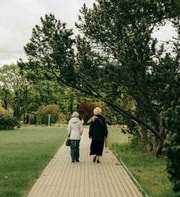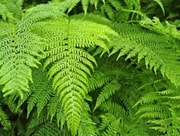This powerful natural painkiller is growing all around you in Australia—have you seen it?
By
Danielle F.
- Replies 0
Australia’s great outdoors is a treasure trove of natural wonders, but as any seasoned bushwalker or backyard gardener knows, it’s also home to its fair share of biting, stinging critters. Whether you’re enjoying a picnic in the park, tending to your veggie patch, or exploring the bush, an unexpected encounter with a wasp, ant, or bee can quickly turn a lovely day into a painful ordeal.
But what if we told you that a powerful, natural painkiller is hiding in plain sight—growing wild all across the country? That’s right! There’s a humble Aussie plant that could be your secret weapon against insect stings, and chances are, you’ve walked past it hundreds of times without even realising its potential.
The plant in question is the bracken fern, a hardy, widespread fern found in bushland, parks, and even some suburban gardens throughout Australia. While it might look like just another bit of greenery, this unassuming plant has been used for thousands of years by Indigenous Australians for its remarkable healing properties.
Recently, outback adventurer Sam Down brought the bracken fern into the spotlight, sharing his personal experiences and bushcraft knowledge online. According to Sam, the bracken fern’s sap contains aluminium sulphate—the same active ingredient found in many commercial bug sting remedies.
‘To get a little scientific, the aluminium sulphate breaks down a protein which is found in nearly all venom,’ Sam explained. ‘The process is called denaturing. The pain goes away because the venom becomes less effective.’
Sam’s not just talking theory—he’s used this trick dozens of times for himself and his mates. In one memorable incident, after stepping on an ant’s nest and being stung around 20 times, Sam’s quick-thinking friend dashed into the bush, grabbed some bracken, and applied the sap to the stings. The relief was almost immediate!
How to use bracken fern for insect stings
If you ever find yourself in a pinch after a sting, here’s how you can use bracken fern to ease the pain:
A word of caution
While bracken fern is a handy bush remedy for stings, it’s important to note that eating the plant is not recommended. Although some cultures have used bracken as a food source after careful processing, consuming large amounts can be toxic and has been linked to stomach irritation and even cancer. So, stick to using it externally for stings and bites only!
Indigenous knowledge: Respecting ancient wisdom
Indigenous Australians have long known about the healing powers of native plants like bracken fern. Their traditional knowledge, passed down through generations, is a testament to the incredible resources our natural environment provides. As always, it’s important to respect and acknowledge this wisdom, and to use bush remedies responsibly.
Other natural remedies for stings and bites
Bracken fern isn’t the only natural remedy you might find in your backyard or local bushland. Here are a few more time-tested tips:

We’d love to hear from you! Have you ever used bracken fern or another natural remedy for stings or bites? Do you have any bush medicine tips passed down through your family? Share your stories and advice in the comments below—your experience could help a fellow member in need! Remember, next time you’re out and about in the Aussie bush, keep an eye out for the humble bracken fern. You never know when nature’s own painkiller might come in handy!
But what if we told you that a powerful, natural painkiller is hiding in plain sight—growing wild all across the country? That’s right! There’s a humble Aussie plant that could be your secret weapon against insect stings, and chances are, you’ve walked past it hundreds of times without even realising its potential.
The plant in question is the bracken fern, a hardy, widespread fern found in bushland, parks, and even some suburban gardens throughout Australia. While it might look like just another bit of greenery, this unassuming plant has been used for thousands of years by Indigenous Australians for its remarkable healing properties.
Recently, outback adventurer Sam Down brought the bracken fern into the spotlight, sharing his personal experiences and bushcraft knowledge online. According to Sam, the bracken fern’s sap contains aluminium sulphate—the same active ingredient found in many commercial bug sting remedies.
‘To get a little scientific, the aluminium sulphate breaks down a protein which is found in nearly all venom,’ Sam explained. ‘The process is called denaturing. The pain goes away because the venom becomes less effective.’
Sam’s not just talking theory—he’s used this trick dozens of times for himself and his mates. In one memorable incident, after stepping on an ant’s nest and being stung around 20 times, Sam’s quick-thinking friend dashed into the bush, grabbed some bracken, and applied the sap to the stings. The relief was almost immediate!
How to use bracken fern for insect stings
If you ever find yourself in a pinch after a sting, here’s how you can use bracken fern to ease the pain:
- Find the bracken fern: Look for its distinctive, feathery fronds in bushland, parks, or even roadside verges.
- Uproot the plant: Grab the stem near the base and gently pull it out of the ground.
- Clean the root: Rinse off any dirt with water, or simply rub it off with your hands.
- Access the sap: Snap the lower, brown part of the root to reveal strands covered in sap.
- Apply the sap: Rub the sap directly onto the affected area.
A word of caution
While bracken fern is a handy bush remedy for stings, it’s important to note that eating the plant is not recommended. Although some cultures have used bracken as a food source after careful processing, consuming large amounts can be toxic and has been linked to stomach irritation and even cancer. So, stick to using it externally for stings and bites only!
Indigenous knowledge: Respecting ancient wisdom
Indigenous Australians have long known about the healing powers of native plants like bracken fern. Their traditional knowledge, passed down through generations, is a testament to the incredible resources our natural environment provides. As always, it’s important to respect and acknowledge this wisdom, and to use bush remedies responsibly.
Other natural remedies for stings and bites
Bracken fern isn’t the only natural remedy you might find in your backyard or local bushland. Here are a few more time-tested tips:
- Plantain leaves: Crushed and applied to the skin, these can help soothe bites and stings.
- Aloe vera: The gel from this common garden plant is great for cooling and calming irritated skin.
- Ice packs: If you’re at home, a cold compress can help reduce swelling and pain.
Key Takeaways
- The bracken fern, which is found widely across Australia, has pain-relieving properties that can help treat insect stings.
- The sap of the bracken fern contains aluminium sulphate, an ingredient that breaks down the proteins in insect venom and is also found in many commercial sting remedies.
- Indigenous Australians have used the bracken fern for thousands of years, but eating the plant without proper knowledge is dangerous as it can be toxic and even cause stomach cancer.
- To use it, you uproot the plant, snap the lower part of the root to access the sap, and rub the sap on the sting to relieve pain.
We’d love to hear from you! Have you ever used bracken fern or another natural remedy for stings or bites? Do you have any bush medicine tips passed down through your family? Share your stories and advice in the comments below—your experience could help a fellow member in need! Remember, next time you’re out and about in the Aussie bush, keep an eye out for the humble bracken fern. You never know when nature’s own painkiller might come in handy!








